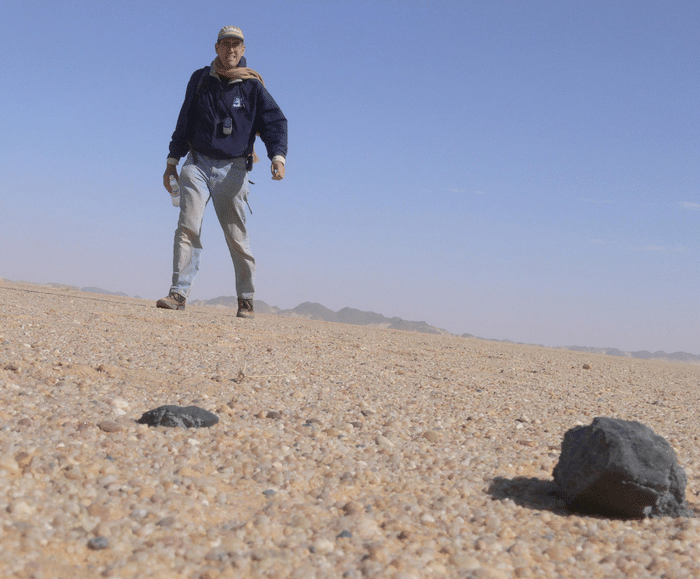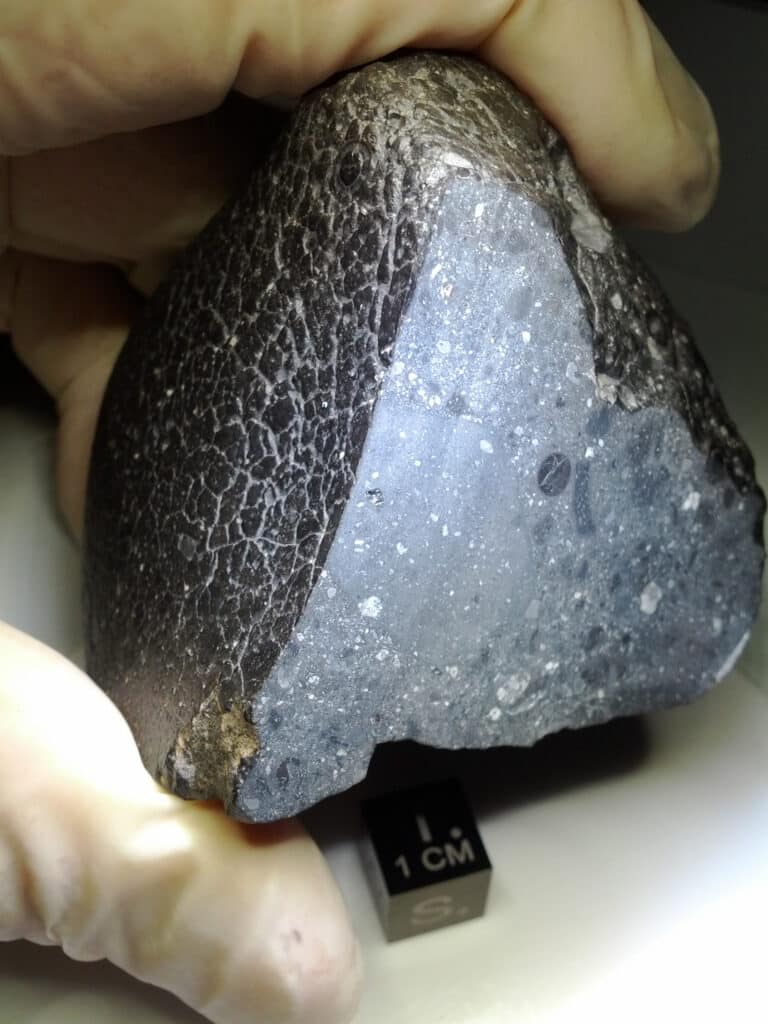Astronomers have solved a mystery that has long perplexed them: why do rocks near an asteroid’s surface survive to the ground as meteorites? Small asteroids are powerfully heated when entering Earth’s atmosphere, causing melting and fragmenting. Investigators discovered that the meteorites didn’t come from the better-shielded interior, however — they came from the surface at the back of the asteroid.
Astronomers were able to deduce this thanks to the entry of asteroid 2008 TC3 they observed for 20 hours 14 years ago.
“Most of our meteorites fall from rocks the size of grapefruits to small cars,” says study lead author Peter Jenniskens, meteor astronomer at the SETI Institute and NASA Ames Research Center, in a media release. “Rocks that big do not spin fas enough to spread the heat during the brief meteor phase, and we now have evidence that the backside survives to the ground.”

SETI Institute/NASA Ames Research Center
2008 TC3, a 6-meter-sized asteroid, disintegrated over the Nubian Desert of Sudan, scattering meteorites over a 7×30 kilometer area. Researchers recovered over 600 meteorites. Some were big as a fist, while most were no bigger than a thumbnail. They were surprised to find the larger fist-sized meteorites were more spread out than the smaller ones.
“While the asteroid approached Earth, its brightness flickered from spinning and tumbling,” notes Darrel Robertson, theoretical astronomer at NASA’s Asteroid Threat Assessment Project. “Because of that, asteroid 2008 TC3 is unique in that we know the shape and orientation of the asteroid when it entered Earth’s atmosphere.”
A hydrodynamic model of the asteroid’s entry into Earth’s atmosphere showed how it melted and broke up. “Because of the high speed coming in, we found that the asteroid punched a near vacuum wake in the atmosphere,” notes Robertson. “The first fragments came from the sides of the asteroid and tended to move into that wake, where they mixed and fell to the ground with low relative speeds.”
Astronomers say the smallest meteorites were stopped by friction with the atmosphere while falling to the ground. Meanwhile, the larger meteorites were harder to stop and fell further downrange. Many of the recovered meteorites were discovered along a narrow 1-kilometer-wide strip in the asteroid’s path.
“The asteroid melted more and more at the front until the surviving part at the back and bottom-back of the asteroid reached a point where it suddenly collapsed and broke into many pieces,” says Robertson. “The bottom-back surviving as long as it did was because of the shape of the asteroid.”
Researchers report that the different types of meteorite were spread randomly on the ground, meaning they were also spread randomly in the original asteroid. “That agrees with the fact that other meteorites of this kind, albeit on a much smaller scale, also contain random mixtures,” explains study co-author Cyrene Goodrich, of the Lunar and Planetary Institute.
The authors say their findings can also help understand other meteorite falls. Since asteroids are exposed to cosmic rays in space, it creates a low level of radioactivity and more near the surface.
“From that radioactivity, we often find that the meteorites did not come from the better-shielded interior,” says Jenniskens. “We now know they came from the surface at the back of the asteroid.”
The study is published in the journal Meteoritics and Planetary Science.












